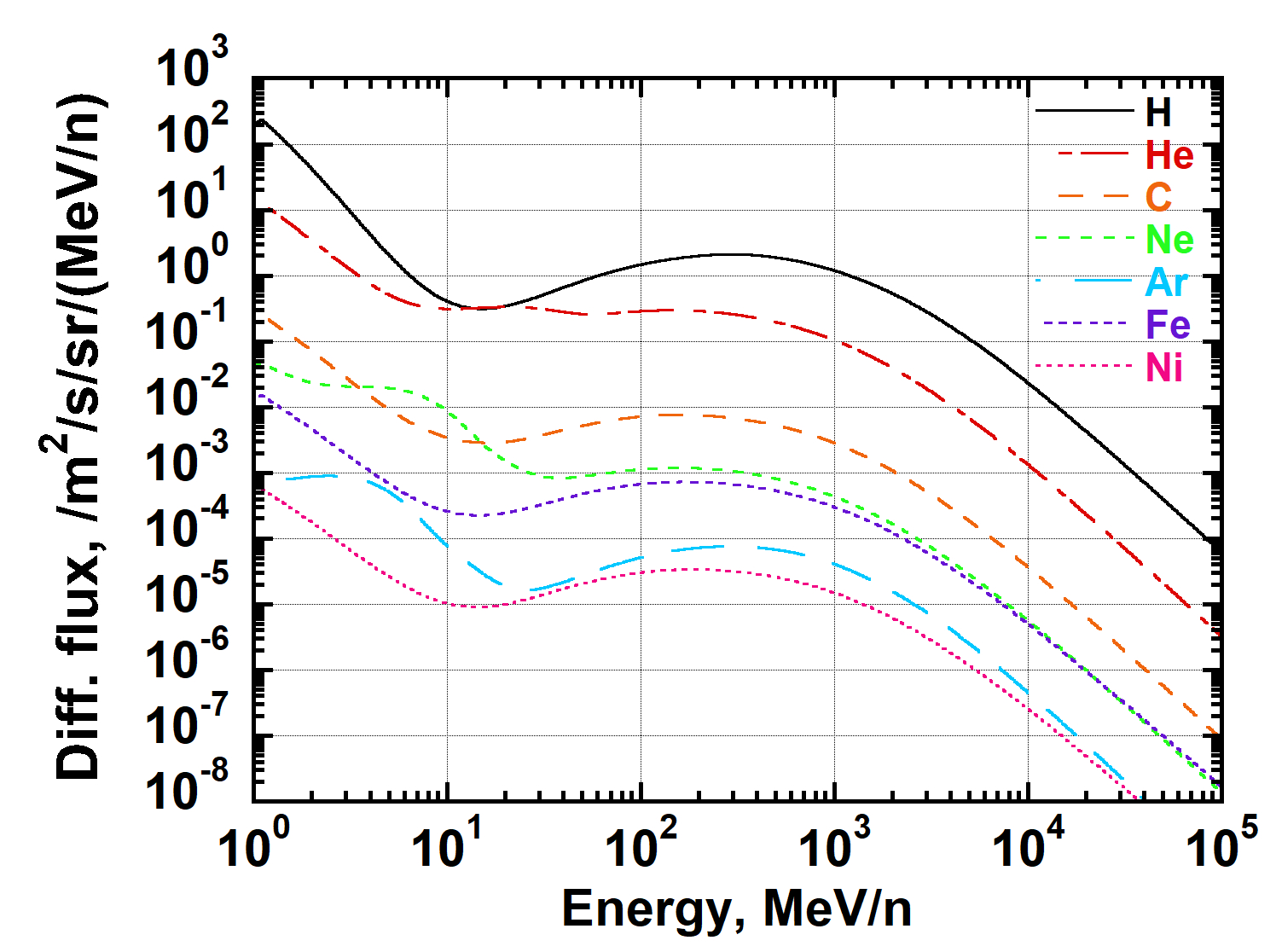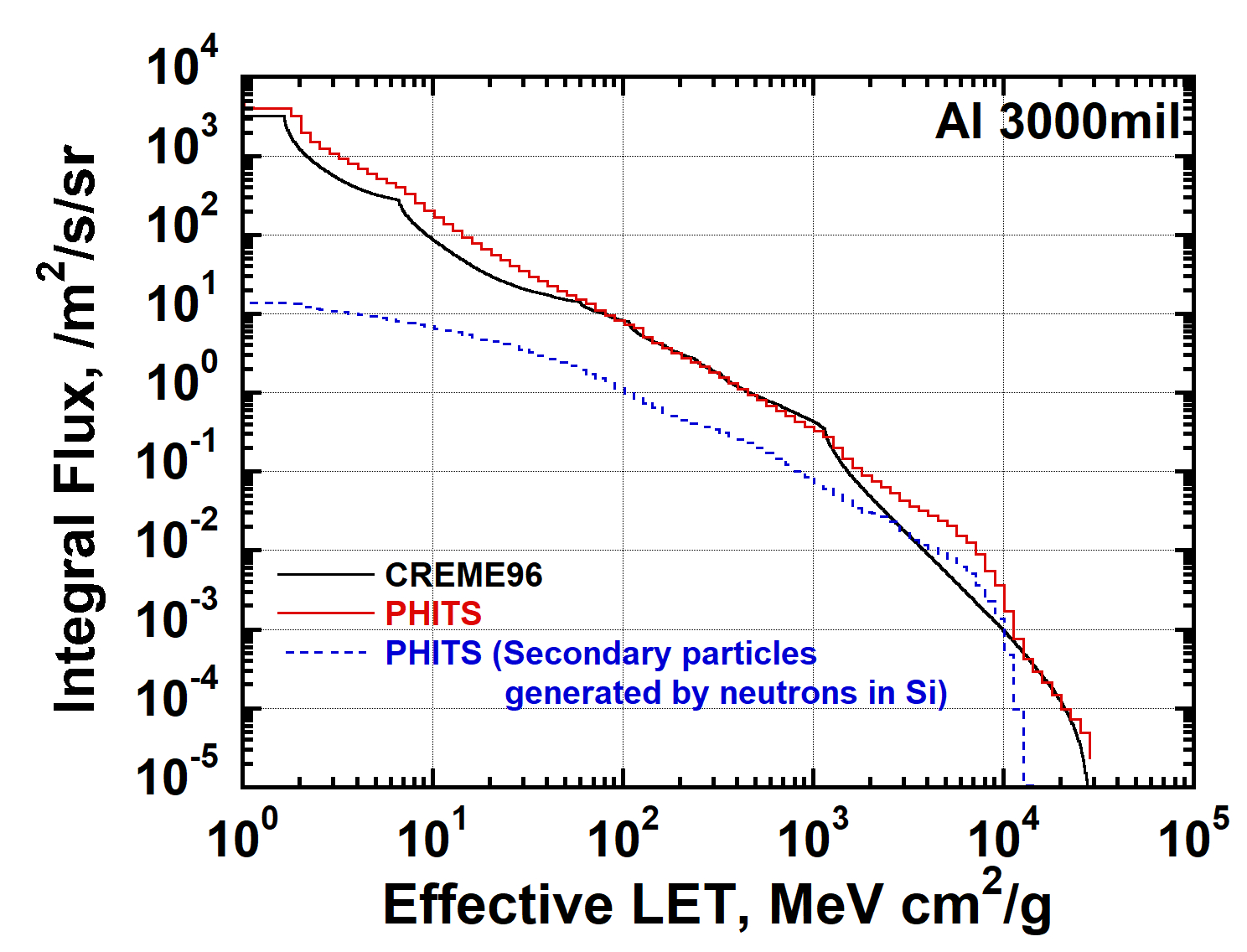Research on Radiation Protection Technology
JAXA Supercomputer System Annual Report April 2019-March 2020
Report Number: R19EG3210
Subject Category: Research and Development
- Responsible Representative: Koji Yamanaka, Director, Research and Development Directorate, Research Unit I
- Contact Information: Kazunori Shimazaki, Research and Development Directorate, Research Unit I(shimazaki.kazunori@jaxa.jp)
- Members: Aki Goto, Kazunori Shimazaki
Abstract
In order to realize future human space mission while ensuring astronauts safety, space-radiation protection technologies are required. Our goal is to establish the accurate estimation technology of space-radiation exposure doses and the method to optimize shielding designs for spacecrafts.
Reference URL
N/A
Reasons and benefits of using JAXA Supercomputer System
We use JSS2 for PHITS (Particle and Heavy Ion Transport code System) Monte Carlo simulations to estimate shielding effects of materials against space radiations. PHITS Monte Carlo simulations take a large amount of time when the computational system is large and complex, such as the system simulated manned-spaceship structure. Such simulations enable to be run at high speed with statistical accuracy by using JSS2.
Achievements of the Year
It is needed to establish exposure dose estimation technology based on numerical simulation using radiation transport code for radiation protection. We are addressing a dose prediction using a Monte Carlo code and verifying its validity by comparing with standard prediction tool historically used in the space development filed. PHITS (Particle and Heavy Ion Transport code System) Ver. 3.16[1-4] was used as the radiation transport Monte Carlo code and CREME96 [5] was used as a standard prediction tool in this study.
CREME96 can easily and quickly estimate the integral flux as a function of effective LET (Linear Energy Transfer) in a material placed behind Al-shielding against the galactic cosmic ray (GCR). The calculation can be, therefore, repeatedly performed in a short time while changing the shielding thickness. However, although this standard tool is very powerful and proven tools, it has some limitations. For example, it assumes a very simple flat plate structure. In addition, it cannot consider the influence of secondary particles (neutrons etc.) generated by nuclear reactions between Al-shieling and incident charged particles.
Then, the effective LET dependence of the integral flux in Si was calculated by CREME96 and PHITS when the GCRs were the incident particle. For the GCR spectra, we used the GCR model (outside the Earth’s magnetosphere at 1 AU) of the solar minimum (1977) provided by CREME96. The nuclides used were hydrogen (Z = 1) to nickel (Z = 28). Fig. 1 shows a part of the spectra used. In the calculation, a two-layer model of Al and Si was used. The Al shielding thickness was 100 mil and 3000 mil.
Figs. 2 and 3 show the calculation results. When the Al-shielding was thin (100 mil), the integral flux as a function of the effective LET showed good agreement between CREME96 and PHITS. When the Al-shielding was thick (3000 mil), a slight difference occurred at the low effective LET region and the region of 200 to 1000 MeV cm2 / g. These differences are probably due to differences in the used calculation code, nuclear cross section, etc. In particular, the influence of secondary particles cannot be considered in CREME96. Hence, the influence of secondary particles (in fact, particles generated by neutrons generated in Al) is shown by a blue dashed line in Figs. 2 and 3. As a result, in the case of Al-shielding 3000 mil, we can observe that the influence of particles generated by neutrons appears in the region of 200 to 1000 MeV cm2 / g. Therefore, PHITS will be able to estimate the radiation flux after shielding when the shielding is so thick that the influences of secondary particles cannot be ignored.
[1] T.Sato et al., J.Nucl.Sci.Technol.55, 684-690 (2018).
[2] A. Boudard et al., Phys. Rev C87, 014606 (2013).
[3] H. Hirayama et al., SLAC-R-730 (2005) and KEK Report 2005-8 (2005)
[4] K. Iida, A. Kohama, and K. Oyamatsu, J. Phys. Soc. Japan 76, 044201 (2007).
[5] https://creme.isde.vanderbilt.edu/

Fig.1: Particle energy spectra obtained from CREME96 (1977 solar minimum). Only H (proton), He, C, Ne, Ar, Fe, and Ni spectra are shown.
Publications
N/A
Usage of JSS2
Computational Information
- Process Parallelization Methods: MPI
- Thread Parallelization Methods: OpenMP
- Number of Processes: 48 – 300
- Elapsed Time per Case: 30000 Second(s)
Resources Used
Fraction of Usage in Total Resources*1(%): 0.21
Details
Please refer to System Configuration of JSS2 for the system configuration and major specifications of JSS2.
| System Name | Amount of Core Time(core x hours) | Fraction of Usage*2(%) |
|---|---|---|
| SORA-MA | 0.00 | 0.00 |
| SORA-PP | 579,345.19 | 3.75 |
| SORA-LM | 0.00 | 0.00 |
| SORA-TPP | 0.00 | 0.00 |
| File System Name | Storage Assigned(GiB) | Fraction of Usage*2(%) |
|---|---|---|
| /home | 9.54 | 0.01 |
| /data | 9,651.19 | 0.17 |
| /ltmp | 1,953.13 | 0.17 |
| Archiver Name | Storage Used(TiB) | Fraction of Usage*2(%) |
|---|---|---|
| J-SPACE | 0.00 | 0.00 |
*1: Fraction of Usage in Total Resources: Weighted average of three resource types (Computing, File System, and Archiver).
*2: Fraction of Usage:Percentage of usage relative to each resource used in one year.
JAXA Supercomputer System Annual Report April 2019-March 2020




